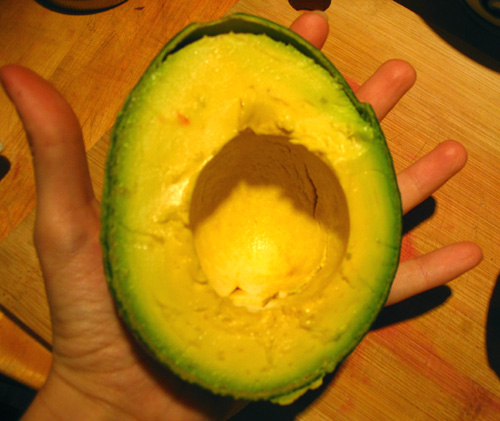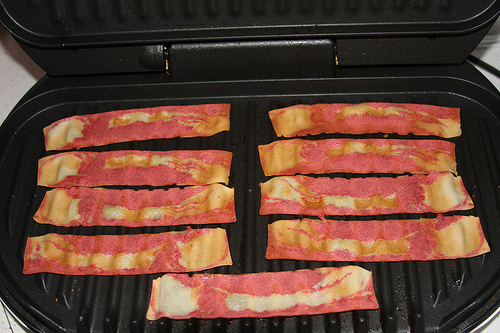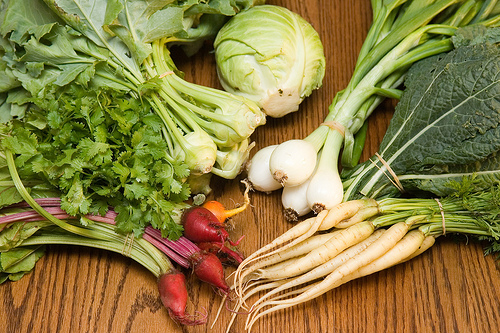I’ve been reminded the past few weeks why Spring may be my favorite season, and I need only one word for it: asparagus.
I’ve been pining or asparagus season since, oh, November or so. Granted, this is California, so I could theoretically get asparagus anytime I want, but it’s usually conventionally grown and from Mexico or Chile. With a vegetable that’s technically a young shoot and is best when it’s fresh, there’s no way this stuff is going to cut it.
When I spied local, fresh asparagus at my farmers’ market three weeks ago, my jaw literally dropped. I’ve been buying a pound of it every week since, which I usually consume singlehandedly in two sittings.
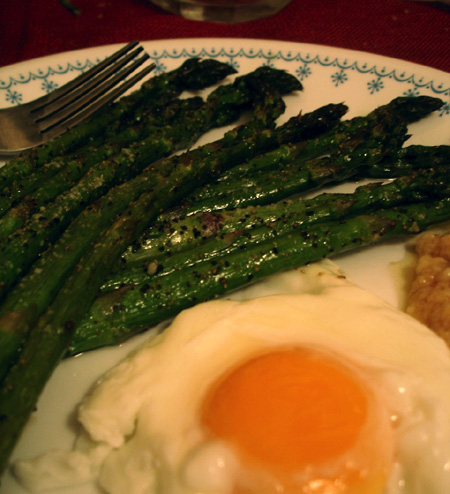
The above is one of my more successful asparagus endeavors: roast asparagus (with salt and pepper), a poached egg, and a miso butter sauce on the side. Dipping the asparagus in the egg yolk was great, and the miso butter — get this vegans — tasted exactly like parmesan cheese. As one who’s been eschewing dairy lately, this discovery made my evening. (Miso butter recipe here, I used margarine: http://www.nytimes.com/2006/04/19/dining/193crex.html)
However, pan-roasting asparagus turned out to be the best option. Even better than roasting. I made a giant plate of it for me and my sweetie; prep was little more than cutting the asparagus spears into bite-ish-sized piece and sauteeing in olive oil over medium-high heat for five minutes, then cutting the heat to low for the last five. Sprinkle with some salt and pepper, and you have a meal fit for a king. Or queen. Or whatever royalty you want to be.
We’ve also started enjoying our CSA share — our second pick-up is tomorrow. Our CSA seems to favor a really wide variety of vegetables. Last week, it was parsnips, which I’d never had. We discovered that we really like parsnips. Veggie prep this week has been roasting them — a mix of a parsnip, some carrots, a beet, red onion, some fennel root, coated with olive oil and put in a pan with about a cup of veggie broth. Roasty at 350F for an hour; dress with mixture of (2 T soy sauce + 1 T balsamic vinegar), salt, pepper, some cayenne, fresh herbs (we had parsley). We found feta to be a nice addition as well. Also good with brown rice. Pretty much any root veggies would do well in this way of preparing, which I found in my CSA cookbook. Note to veggie lovers out there: CSA cookbooks are great, if you can get your hands on them.
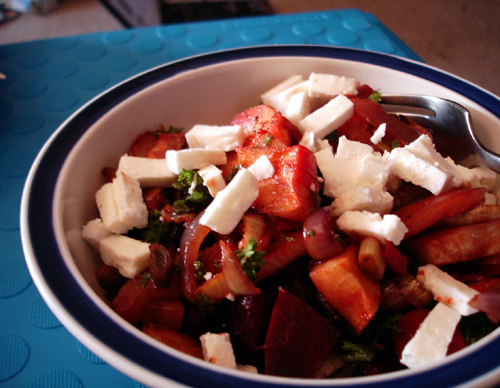
Here’s to Spring and all of the adventures it brings.


